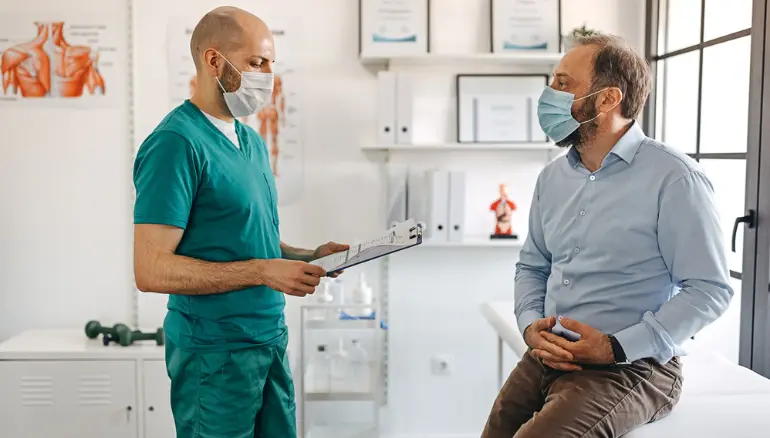A genital examination is a key clinical assessment for male children, adolescents, and adults.
It can be used to detect conditions like testicular cancer, Klinefelter syndrome, and urinary problems, as well as assess normal development. It’s important to conduct this examination routinely with patients to identify and treat problems early. This reduces the risk of complications like infertility.
This article outlines how to examine the penis and testes, as well as assess secondary sexual characteristics.
How to approach an examination with a patient
Patients may feel nervous or uneasy about their genitals being examined, or about bringing up sexual and reproductive health issues.
How to perform a testicular examination
Testes are normally roughly proportional to body size. Low testicular volume suggests impaired spermatogenesis1. Testes less than 4 mL from mid-puberty are a consistent feature of Klinefelter syndrome2.
Asymmetry between testes is common (e.g. 15 mL versus 20 mL) and not medically significant. Asymmetry is sometimes more pronounced if there’s been unilateral testicular damage.
Check testis and scrotal contents
What to look for when examining secondary sexual characteristics
Secondary sexual characteristics can be assessed in conjunction with a genital examination.
Onset of puberty
The average onset is 12-13 years.
Virilisation
The signs include:
- Facial and body hair development
- Muscle development
- Penile growth.
Gynaecomastia
Gynaecomastia is the excessive and persistent development of benign glandular tissue evenly distributed in a sub-areolar position of one or both breasts3. In obese patients, you will need to distinguish glandular tissue from sub-areolar fat.
Gynaecomastia is commonly seen during puberty and usually resolves in later adolescence3. Patients may feel soreness and considerable embarrassment5.
Gynaecomastia can be caused by increased oestrogen, low testosterone, various medications, marijuana, androgen abuse and abnormal liver function3,4,5. Rare secondary causes include hypothalamic/pituitary and adrenal/testis tumours (oestrogen excess)4. If gynecomastia is developing rapidly, it may indicate testicular tumour5.
In contrast to gynecomastia, breast cancer can be located anywhere within the breast tissue and feels firm or hard3.
Download the clinical summary guide as a print-ready PDF.
References
1. Takihara et al., 1987. Significance of Testicular Size Measurement in Andrology: II. Correlation of Testicular Size with Testicular Function. The journal of urology
2. Groth, 2013. Klinefelter Syndrome – A Clinical Update. Clinical Endocrinology and Metabolism
3. Deepinder & Braunstein, 2011. Gynecomastia: incidence, causes and treatment. Expert Review of Endocrinology & Metabolism
4. Johnson & Murad, 2009. Gynecomastia: Pathophysiology, Evaluation, and Management. Mayo Clinic Proceedings
5. Narula & Carlson, 2014. Gynaecomastia—pathophysiology, diagnosis and treatment. Nature Reviews Endocrinology











